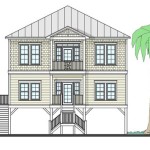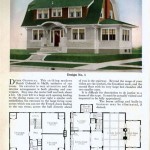Plans To Build A Tiny House: Comprehensive Guidelines Singapore
The dream of owning a home in Singapore is often intertwined with navigating the realities of limited land availability and high property prices. This has fueled interest in alternative housing solutions, with the concept of tiny houses gaining traction. However, the implementation of building a tiny house in Singapore requires careful consideration of local regulations, space constraints, and resource availability. This article presents comprehensive guidelines for individuals interested in exploring plans to build a tiny house in Singapore, addressing key considerations and offering a structured approach to the process.
Navigating the construction of a tiny house in Singapore presents unique challenges. Unlike countries with expansive land, Singapore operates under stringent land use policies dictated by the Urban Redevelopment Authority (URA). These regulations are designed to optimize land utilization and maintain a standardized urban landscape. Therefore, building a standalone tiny house on a permanent foundation in a traditional sense is generally not permissible. The guidelines outlined below aim to provide a framework for exploring alternative avenues that align with Singaporean regulations while still embracing the principles of tiny house living.
Understanding Planning Regulations and Zoning Laws
The foundational step in considering a tiny house project in Singapore involves thoroughly understanding the existing planning regulations and zoning laws. The URA's Master Plan is a crucial resource that outlines the permissible land use for different zones across the island. This plan dictates the types of buildings allowed, including residential, commercial, or industrial structures. It is vital to consult the Master Plan to determine if the intended location aligns with residential use. Additionally, specific regulations pertaining to building height, set-backs, and plot ratio must be considered. These regulations are in place to ensure urban development is sustainable and maintains a cohesive architectural landscape.
Furthermore, it's essential to differentiate between permanent structures and temporary structures. Permanent structures, which are often defined as buildings fixed to the ground with a foundation, are subject to stricter building codes and planning approvals. In contrast, temporary structures, which can be relocated, may have different regulations. The suitability of a tiny house, depending on its construction and intended use, will be affected by this distinction.
Engaging with relevant government agencies, such as the URA and the Building and Construction Authority (BCA), is crucial. Pre-submission consultations can provide clarity on specific project proposals and identify potential roadblocks early in the planning process. These consultations offer an opportunity to understand the specific requirements applicable to the intended project and receive guidance on navigating the regulatory landscape.
Exploring Viable Alternatives to Traditional Tiny House Construction
Given the limitations on traditional tiny house construction as standalone dwellings, exploring alternative approaches is essential. Several strategies can be considered, each with its own set of advantages and disadvantages. One option is to focus on internal renovations within existing properties. This involves transforming existing rooms or spaces into self-contained living units, embodying the principles of tiny house living without altering the external structure of the building. This approach aligns with existing regulations as it does not require new construction or alterations to the building's footprint.
Another viable alternative is to consider co-living spaces or shared housing arrangements. These concepts promote efficient space utilization and resource sharing, which are core tenets of the tiny house movement. In Singapore, co-living developments are gaining popularity, offering individuals a sense of community and affordability. By participating in such arrangements, individuals can experience the benefits of minimalist living within a framework that complies with existing regulations.
Exploring the potential of accessory dwelling units (ADUs) is another avenue worth considering. While not explicitly defined in Singaporean regulations, the concept of ADUs – smaller, independent living units located on the same property as a primary dwelling – can be adapted. This might involve converting existing outbuildings or constructing small additions to established residences, subject to compliance with relevant building codes and zoning regulations. This approach requires careful planning and consultation with authorities to ensure adherence to permissible building parameters.
Finally, investigating the possibility of utilizing mobile homes or prefabricated structures as tiny houses is worth exploring. Mobile homes, designed for transportation and temporary placement, may be subject to different regulations than permanent buildings. Similarly, prefabricated structures, built off-site and assembled on-site, offer efficient construction and potential cost savings. However, the suitability of these options for long-term residential use in Singapore requires careful assessment of zoning laws and building codes.
Considerations for Design, Materials and Sustainability
When planning the internal layout and design of a tiny house, regardless of its form, maximizing space efficiency is paramount. Multifunctional furniture, such as sofa beds and folding tables, can significantly enhance usability. Vertical space utilization is also critical, incorporating storage solutions that extend upwards to optimize limited floor area. Thoughtful design should prioritize natural light and ventilation to create a comfortable and inviting living environment.
The selection of building materials is equally crucial, considering both their durability and environmental impact. Sustainable and locally sourced materials should be prioritized to reduce the carbon footprint of the project. Reclaimed materials can also be incorporated to add character and minimize waste. The use of lightweight materials can be advantageous, particularly in structures that may require future relocation or modification. Proper insulation is essential for thermal comfort and energy efficiency, reducing the need for excessive heating or cooling.
Integrating sustainable technologies into the tiny house design can further enhance its environmental performance. Solar panels can provide renewable energy for electricity generation, while rainwater harvesting systems can collect water for non-potable uses such as toilet flushing and gardening. Composting toilets are another eco-friendly option that can reduce water consumption and minimize waste. Efficient appliances and LED lighting can further reduce energy consumption, contributing to a more sustainable lifestyle.
Beyond the physical design and construction, consider the overall lifestyle implications of tiny house living. Minimalist principles should extend to possessions and consumption habits. Decluttering and simplifying one's belongings is essential for maximizing the limited space and embracing a sustainable lifestyle. Planning for efficient storage and waste management is also crucial for maintaining a clean and organized living environment. Tiny house living is not just about the physical structure; it's about embracing a philosophy of minimalism and sustainable living.
Engaging with experienced architects and contractors who have a strong understanding of Singaporean building regulations and sustainable design principles is highly recommended. Their expertise can ensure that the project aligns with relevant codes and maximizes the potential of the available space. Furthermore, they can provide guidance on selecting suitable materials and incorporating sustainable technologies. Collaboration with professionals can prevent costly mistakes and ensure the successful realization of the tiny house vision.
It is important to note that the information provided in this article is for general guidance only and should not be considered legal or professional advice. It is essential to conduct thorough research, consult with relevant authorities, and engage with qualified professionals before embarking on any tiny house project in Singapore. Keeping up-to-date with any changes in building regulations is crucial. By adhering to these guidelines and approaching the process with careful planning and consideration, individuals can navigate the complexities of building a tiny house in Singapore and create a sustainable and fulfilling living space.

Tiny House Floorplan 4x7 Meters Plan 2 Bedroom Small Story Etsy

Granny Flat Designs Guide Trends Innovative Concepts Practical Tips Space Maximization Architectural Ingenuity Stylish Etsy

Tiny House Floorplan 4x7 Meters Plan 2 Bedroom Small Story Etsy

Floor Plan Symbols Abbreviations Your A Z Guide Cedreo

Create Professional 3d Floor Plans In Minutes

Floor Plan Symbols Abbreviations Your A Z Guide Cedreo

Tiny Homes In New Zealand Moneyhub Nz

Create Professional 3d Floor Plans In Minutes

Step By Guide For Diy Crawl Space Encapsulation

Create Professional 2d And 3d Floor Plans Roomsketcher
Related Posts








